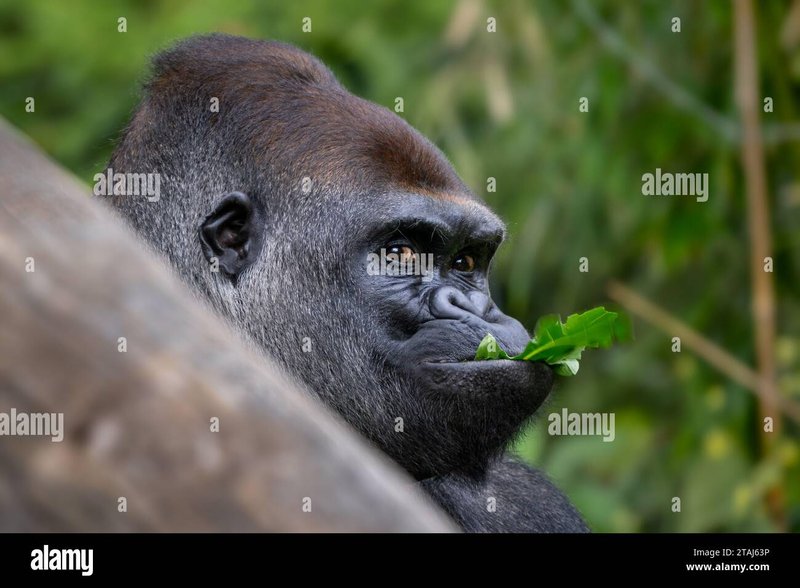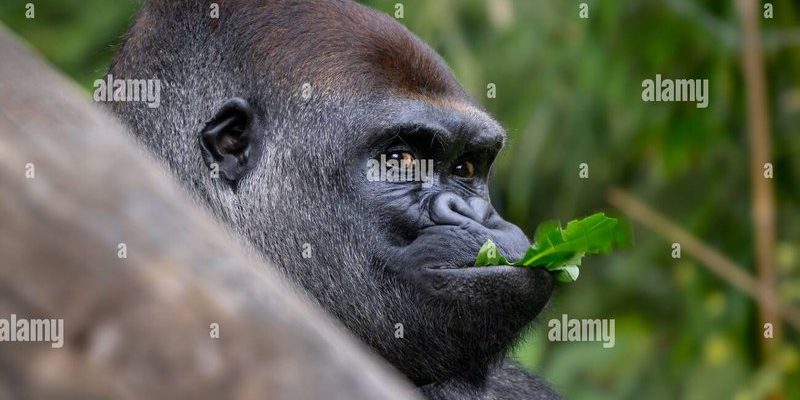
Honestly, when it comes to conservation, the fate of the western gorilla isn’t just their problem; it’s ours too. As they navigate the challenges of habitat loss, poaching, and diseases, we’re reminded that our world is interconnected. Let’s dive deeper into understanding why these amazing animals are endangered, what that really means, and what we can do about it.
What Makes the Western Gorilla Unique?
The western gorilla is one of two species of gorillas, and it has two distinct subspecies: the *western lowland gorilla* and the *cross river gorilla*. These gorillas are not just big and strong; they also play a crucial role in their ecosystem. When they munch on fruit or leaves, they help disperse seeds, promoting the growth of trees and plants. This makes them important for maintaining the health of their habitats, much like how bees pollinate flowers.
You might be wondering what sets them apart from other gorilla species. Well, western gorillas have a more slender build and are found mostly in dense rainforests across central and western Africa. They have a rich social structure and are known for their playful nature, particularly the young ones. Watching them goof around is heartwarming, right? But their playful antics are overshadowed by the serious threats they face, which makes learning about them even more pressing.
Why Are Western Gorillas Endangered?
Like many species, western gorillas face numerous challenges that have led them to be classified as *critically endangered*. The IUCN Red List (a comprehensive inventory of the global conservation status of biological species) highlights poaching, habitat destruction, and disease as the main culprits.
1. Habitat Loss: The forests that are home to western gorillas are being cut down for agriculture and logging. As humans clear land for farming, they destroy these animals’ homes, disrupting their lives and diminishing their food sources.
2. Poaching: Unfortunately, some people hunt gorillas for bushmeat or capture them for the illegal pet trade. This not only reduces their population but also puts pressure on their social structures. Imagine a family unit suddenly torn apart; it’s heartbreaking.
3. Diseases: Just like humans, gorillas can catch diseases. Outbreaks of illness, such as Ebola, have devastated populations in the past. Their close genetic relation to us means they’re susceptible to some of the same diseases, which is a double-edged sword.
Current Population Estimates
Estimating the exact number of western gorillas in the wild is tough. However, it’s believed that the *western lowland gorilla* population has decreased by over 60% in the last few decades. The numbers can fluctuate, but some estimates suggest there are only around 100,000 to 200,000 left. The *cross river gorilla* is even rarer, with only about 200 to 300 individuals remaining.
This decline is alarming, especially when you consider that every individual gorilla contributes to the genetic diversity needed for the population’s survival. Fewer individuals mean less diversity, which can lead to vulnerabilities and challenges in adapting to changing environments.
Conservation Efforts Underway
There’s a glimmer of hope for the western gorilla, thanks to various conservation efforts happening around the world. Organizations like the World Wildlife Fund (WWF) and local African groups are working tirelessly to protect these magnificent creatures.
1. Protected Areas: Establishing national parks and reserves helps safeguard gorilla habitats. By creating safe spaces, we can let these gorillas thrive without the constant threat of poachers or habitat destruction looming over them.
2. Community Involvement: Many conservation programs focus on involving local communities. By educating people about the importance of gorillas and providing them with sustainable livelihood options, communities learn to protect rather than exploit their natural resources. It’s about building a partnership for a shared future.
3. Anti-Poaching Initiatives: Teams are set up to patrol forests and protect gorillas from poachers. These brave individuals often risk their lives, working in remote areas to keep these gentle giants safe. Their commitment makes a huge difference.
How Can You Help?
You don’t have to be a wildlife expert to get involved in gorilla conservation. Here are a few ways you can make a positive impact:
- Support Conservation Organizations: Consider donating to wildlife organizations that focus on gorilla protection.
- Spread Awareness: Share information on social media, talk to your friends, and raise awareness about the plight of western gorillas.
- Responsible Tourism: If you plan to visit their habitats, choose responsible eco-tourism options that support conservation efforts.
- Reduce Human Impact: Make sustainable choices in your daily life, like reducing plastic use or supporting sustainable products.
Every small action counts when it comes to conservation. You might be surprised by how much of a difference your passion and support can make in the fight to save western gorillas.
The Importance of Biodiversity
Protecting western gorillas isn’t just about saving a single species. It’s about preserving biodiversity as a whole. Gorillas play a pivotal role in their ecosystem, and their decline can lead to unforeseen consequences. When we lose one species, it can set off a chain reaction, affecting many others within the same habitat.
Biodiversity contributes to healthy ecosystems, which, in turn, provide us with resources like clean air, water, and even food. It’s a delicate balance, and by protecting western gorillas, we’re also ensuring the well-being of diverse plant and animal life around them.
Global and Local Responsibility
Tackling the issue of western gorilla endangerment isn’t just the job of conservationists; it’s a global responsibility. Governments, organizations, and individuals all have a part to play. Advocating for stronger laws against poaching and illegal trade is crucial, as is supporting sustainable development practices.
We all share a stake in the future of our planet. Just as we depend on the earth, so too do these majestic gorillas. By understanding their plight and taking action, we can help create a future where both humans and gorillas can thrive.
As we wrap up, remember that every effort counts. In preserving the western gorilla, you’re not just saving a species—you’re helping secure the health of our planet for generations to come. So, what can you do today? Whether it’s spreading the word, making sustainable choices, or donating to a worthy cause, your actions can make a difference. Let’s work together to ensure these incredible creatures continue to roam the forests for years to come.

